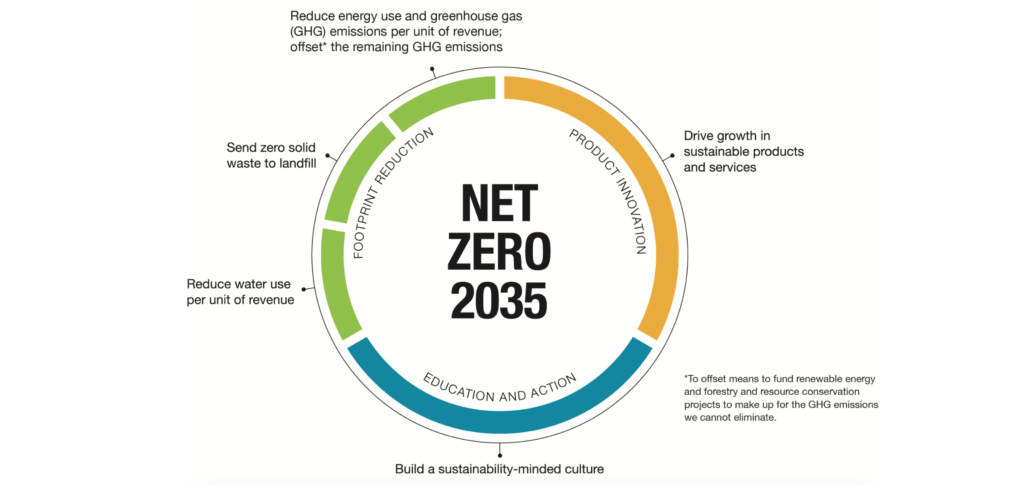
What Industry Leaders in Sustainability Are Doing Right
Amy Hou | February 15, 2018 | Energy & Sustainability
Best practices in corporate sustainability will look different depending on which industry a business falls into. However, there are some common threads that tie industry leaders in sustainability together. In each element of environmental, social, and governance (ESG) practice, these CSR strategies stand out for their innovative leadership.
This is the final installment of a series deep dive into the Sustainability Scorecard. Check out parts I and II to learn best practices for emerging and growing sustainability programs.
What Industry Leaders in Sustainability Are Doing Right
Industry leaders in sustainability are what we like to call “forests.” They’ve grown from budding seedlings, to maturing trees, and finally to thriving forests. Forests have expanded to form symbiotic relationships with their surrounding ecosystems, with the help of exceptional data organization.
Environmental
At the top of their class, top performing CSR programs don’t settle for easy targets. After successfully meeting energy, water, and waste reduction goals, they’re now looking to carbon neutral, zero net impact, and even positive net impact. Kohler’s net zero 2035 goal is just one example.
To strive for net zero impact is to take a step back and look at the company’s entire value chain. It involves both minimizing environmental impact of operations and offsetting the negative impact that remains. It’s no small feat, but it’s doable.
Social
Part of analyzing a company’s value chain as a whole includes its impact on current and potential employees. A visible sign that a company has become a true industry leader in sustainability is when employees cite the company’s commitment to sustainability as one of the main reasons they’re excited about working there.
Dedication to sustainability remains a key influence in recruiting for the largest generation in the workforce: millennials. Delta Airlines sustainability manager Steve Tochilin calls millennials “emerging high-value customers.” They care about more than flight prices and salary; they want to see LEED certification in Sky Clubs and verified progress on emissions reduction. That’s why Delta places an emphasis on detailed and transparent reporting in its goals for the future.
Get more insights from Tochilin and other leaders on gaining buy-in for sustainability.
Governance
There’s a common asset feeding the success of all these programs, and it lies in effective data management. A sophisticated data management process allows them to efficiently analyze performance and pinpoint precise areas of improvement that show the highest potential for ROI. With goals that pervade the entire value chain, tracking ongoing progress is a complex knot to unravel without automated data.
With accurate and timely data, on the other hand, organizations can exceed the standard for reporting. We’ve seen exemplary reporting practices come out of well-organized data, including integrated fiscal and sustainability reports, UN Sustainable Development Goal alignment, and Future-Fit benchmarking.
What Industry Leaders Can Do Even Better
Of course, there’s always room to grow. Among ESG criteria, even trailblazers in the industry can kick their strategy up a notch by spreading their roots.
- Environmental: Once a company has established what’s worked well, it should share its knowledge with the rest of the industry. A rising tide lifts all boats, and other sustainability leaders will need all the help they can get to stay afloat.
- Social: A company’s headquarters and offices don’t live in a vacuum — its surroundings hold potential for leadership, too. Amazon built an impressive “ecodistrict” around its Seattle campus, using waste heat from the data center next door to heat its buildings.
- Governance: Beyond leading by example, businesses can push the whole industry forward with the right partners at their side. Coca-Cola and World Wildlife Fund have achieved much more in the 11 years they’ve worked together than they could have separately.
The industry leaders in sustainability we see today got to where they are by reaching out to the resources and partners around them. And with ambitious targets, company engagement, and precise data, your sustainability strategy can rise to the top as well.
Think your sustainability program is on par with the best of the best? Prove it with our scorecard.
You might also be interested in:
- Top 3 Organizations Driving Corporate Energy Reduction
- ESG Best Practices for Growing Sustainability Programs
- The Corporate Sustainability Professional’s Guide to Better Data Management
If you like what you’re reading, why not subscribe?
About Amy Hou
Amy Hou is a Marketing Manager at Urjanet, overseeing content and communications. She enjoys writing about the latest industry updates in sustainability, energy efficiency, and data innovation.
You May Also Like
Support Business Continuity by Embracing ESG
Honor Donnie | March 18, 2022 | Energy & Sustainability

